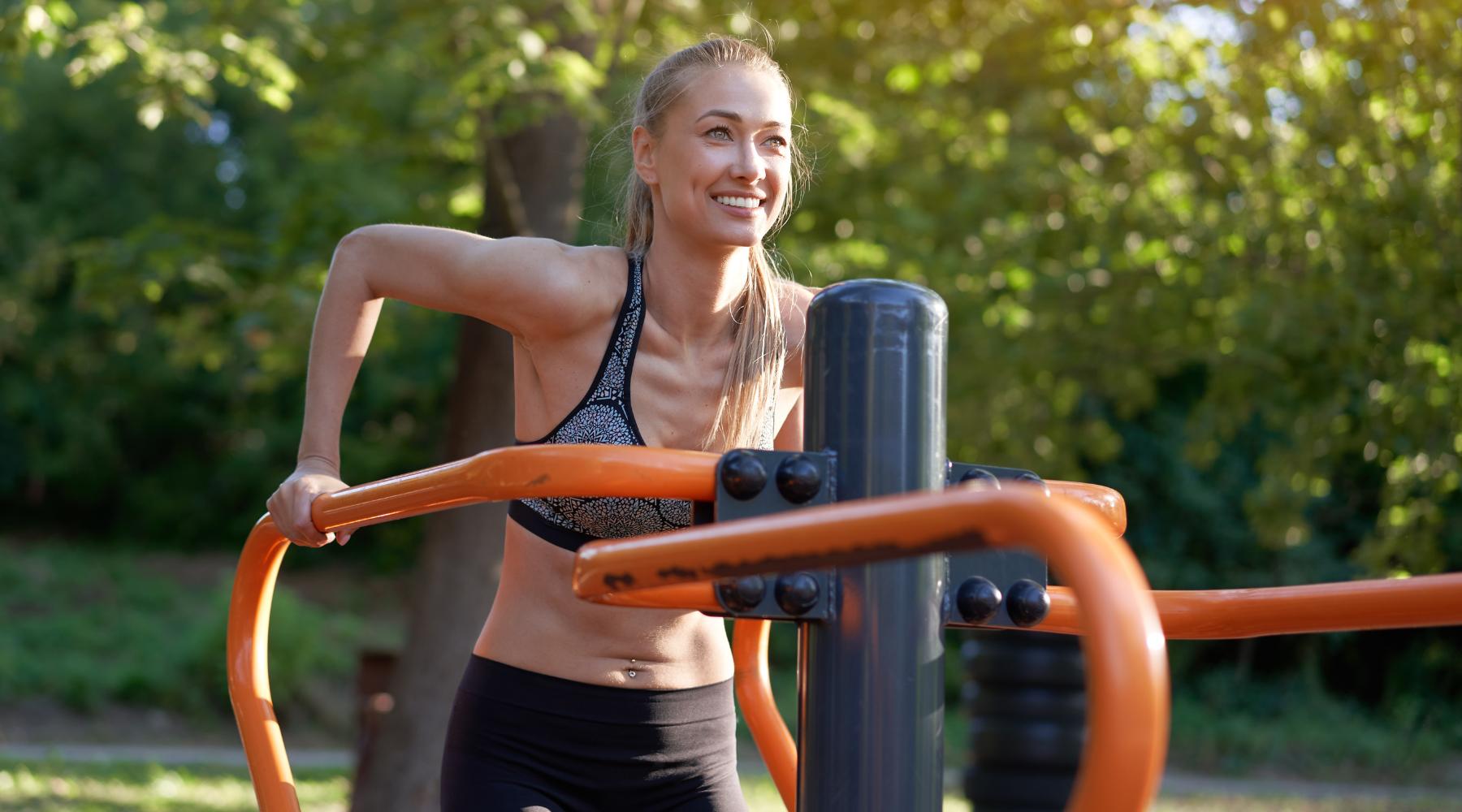Walking is one of the most accessible and convenient forms of exercise, requiring no equipment, no gym membership, and no special skills.
But if you've been walking the same route at the same pace for a while, you might start to feel bored or even discouraged. It's time to consider spicing up your walking routine to make it more challenging and rewarding.
Why Diversify Your Walking Routine?
Your body is incredibly adaptive, which means that it gets accustomed to the same activities over time. While a regular walking routine offers numerous health benefits, including improved cardiovascular health, increased endurance, and weight management, diversifying your walking regimen can take your fitness to the next level.
By adding variety and intensity to your walking routine, you can challenge your body in new ways, burn more calories, and have more fun in the process. Let's explore eight effective workouts to breathe new life into your walking routine.
1. Interval Training:
Interval training is a versatile form of exercise that can add excitement to your walking routine. This method alternates periods of high-intensity walking or jogging with periods of low-intensity or rest. It's an excellent way to boost your cardiovascular fitness, burn more calories, and assist with weight loss.
To kick off interval training, begin with a warm-up—walk at an easy pace for five to ten minutes. Afterward, increase your pace for 30 seconds to two minutes, depending on your fitness level and objectives. You should feel your heart rate rise, and you'll find yourself breathing harder. Following this high-intensity interval, slow down and walk at an easy pace for two to four times the length of the high-intensity interval.
Continue this cycle of high-intensity and recovery intervals for 20 to 30 minutes or as long as you're comfortable. Interval training keeps your heart rate up and burns more calories, helping you reach your fitness goals.
Read more: Walking for Weight Loss: Burn Calories with Every Step
2. Hill Repeats:
Hill repeats are a specialized form of interval training that targets your leg muscles and cardiovascular system. To begin hill repeats, find a hill that's challenging but still allows you to maintain good form.
Start with a five to ten-minute easy-paced warm-up. Then, ascend the hill at a brisk pace, using your arms and slightly leaning forward to power your way up. Once you reach the summit, walk back down the hill at an easy pace for recovery. Repeat this pattern of uphill and downhill intervals for 20 to 30 minutes or as long as you're comfortable.
Hill repeats are a fantastic way to improve leg strength, build endurance, and elevate your fitness levels.
3. Stair Climbing:
Stair climbing provides a superb way to strengthen your leg muscles, glutes, and burn calories. If you have access to stairs, they can be used for effective workouts. To begin, warm up by walking at an easy pace for five to ten minutes, and then start climbing the stairs at a brisk pace. Use the railing or wall for support if necessary, but make an effort to engage your legs and glutes in the stair-climbing process.
As you reach the top, walk back down the stairs at an easy pace for recovery. Repeat the cycle of climbing and descending intervals for 20 to 30 minutes or as long as you're comfortable. If stairs are unavailable, you can use a step platform or a bench for step-up exercises. Stair climbing can significantly enhance lower body strength and stamina.

4. Racewalking:
Racewalking is an advanced form of walking that is both faster and more fluid than regular walking. While it's a competitive sport, you don't have to be a professional athlete to reap its benefits. Begin by warming up with a five to ten-minute easy-paced walk.
Next, start walking briskly, with an exaggerated hip sway and a straight leg. Ensure your back foot leaves the ground before your front foot touches it, but both feet should be on the ground during the middle of your stride. If you're unsure about your form, you can refer to videos or seek feedback from a coach or friend.
Try to sustain this brisk pace for 20 to 30 minutes or as long as it's comfortable. Racewalking can burn more calories than regular walking, enhance your posture, balance, and coordination. It's an excellent way to improve your fitness and can even be done as a low-impact form of exercise.
5. Nordic Walking:
Nordic walking offers a unique blend of variety and intensity to your walking regimen. It entails using specialized walking poles to engage your upper body muscles during the walk. This approach increases calorie burn, boosts cardiovascular health, and reduces joint pressure.
To initiate Nordic walking, acquire a pair of poles designed for this purpose, which are longer than standard walking poles and possess a specialized grip. To perfect the technique, grasp the poles so your hands are level with your hips and your elbows slightly bent. Swing the poles forward with each step and plant them firmly into the ground. While doing this, exert pressure on the poles with your hands and engage your core and upper body muscles to help propel yourself forward.
As you grow more comfortable with Nordic walking, intensify your workouts by tackling hilly terrain or increasing your speed. Alternatively, you can incorporate interval training by alternating fast-paced walking with slower recovery periods. Nordic walking is a full-body workout that enhances cardiovascular fitness and can lead to greater calorie expenditure.
6. Walking Challenges:
Participating in walking challenges can be a motivating way to diversify your walking routine and set new fitness goals. Many organizations and fitness apps host virtual walking challenges where you can compete with others or strive to achieve specific milestones.
These challenges often provide a sense of community and achievement as you track your progress. Whether it's a step-count challenge, a virtual walking marathon, or a themed walking event, these challenges can add a sense of excitement and competition to your daily walks.
7. Nature Walks:
Exploring natural settings and immersing yourself in the great outdoors can make your walking routine not only physically rewarding but mentally refreshing. Nature walks can take you through parks, forests, trails, or even along the beach.
The change of scenery and connection with nature can reduce stress, boost your mood, and provide a more enjoyable walking experience. While walking in nature, you can observe wildlife, appreciate the beauty of your surroundings, and reconnect with the environment. Consider incorporating nature walks into your routine to add variety and enhance the overall benefits of your walks.
8. Social Walks:
Walking with a friend or in a group can make your walking routine more engaging and social. You can schedule regular meet-ups with friends, family, or join local walking groups or clubs.
Social walks not only provide the opportunity for meaningful conversations but can also hold you accountable to your walking goals. Whether you walk and talk with a friend, participate in group fitness walks, or explore your neighborhood with neighbors, the social aspect can make your walking routine feel less like exercise and more like an enjoyable social activity. It's a great way to strengthen your connections with others while improving your health.

Safety Tips for Walking Workouts:
While walking is generally considered a safe form of exercise, there are precautions to ensure you remain injury-free:
- Wear proper footwear: Invest in well-fitting walking shoes with adequate support and cushioning to prevent blisters, foot pain, and other injuries.
- Warm-up and cool-down: Commence each walking session with a five-minute warm-up to prepare your muscles and conclude with a five-minute cool-down to lower your heart rate and avert muscle soreness.
- Stay hydrated: Consume water before, during, and after your walk, especially in hot weather or for extended walks.
- Stay visible: When walking outdoors, don bright or reflective clothing to enhance your visibility to motorists and pedestrians.
- Be mindful of your surroundings: Pay attention to your environment and watch for hazards like uneven sidewalks, loose gravel, and other obstacles. Your safety is paramount.
Read more: 20-Minute Brisk Walking Workout For Beginners
Maximize the Benefits of Walking: Unlocking Your Full Potential
By diversifying your walking routine, you open the door to a wealth of health benefits and improve your overall fitness level. Here's how incorporating various walking workouts can maximize these benefits:
1. Calorie Burn and Weight Management
Different walking workouts challenge your body in distinct ways. Interval training increases your heart rate and calorie burn during and after your walk, aiding in weight management. Hill repeats and stair climbing engage large muscle groups, boosting your metabolism. Racewalking, with its brisk pace, burns more calories than traditional walking. Nordic walking activates your upper body, contributing to higher calorie expenditure. All these methods help you achieve your calorie burn and weight management goals.
2. Cardiovascular Health
Interval training, hill repeats, and racewalking elevate your heart rate, enhancing your cardiovascular fitness. These workouts improve your heart's strength, lower your resting heart rate, and increase your lung capacity. A stronger heart and better lung function translate to improved overall health and endurance.
3. Muscle Strength and Endurance
Hill repeats, stair climbing, and Nordic walking are excellent ways to strengthen leg muscles, glutes, and core. Racewalking, with its specific form, enhances the strength and coordination of the leg and hip muscles. Engaging in these workouts enhances your muscular endurance, making everyday activities feel more effortless.
4. Posture and Balance
Racewalking, with its unique technique, promotes better posture and balance. As you maintain an upright posture and move your hips and legs in a coordinated manner, you strengthen your core and improve overall stability. Over time, this can contribute to better spinal health and balance in daily life.
5. Variety and Motivation
Incorporating a variety of walking workouts keeps your routine exciting and enjoyable. This diversity can help you stay motivated and committed to your walking goals. Instead of dreading a monotonous routine, you'll look forward to the new challenges each workout brings, making it more likely that you'll stick to your fitness plan in the long run.
Read more: What happens to your body if you walk every day?
Incorporating a mix of walking workouts into your routine ensures that you make the most out of this simple yet effective form of exercise - burn more calories, enhance your overall fitness, and enjoy the various physical and mental benefits.
With safety in mind and a commitment to consistency, you'll not only achieve your fitness goals but also maintain a healthier and more active lifestyle. So lace up your shoes, step outside, and embrace the full potential of your walking workouts.



